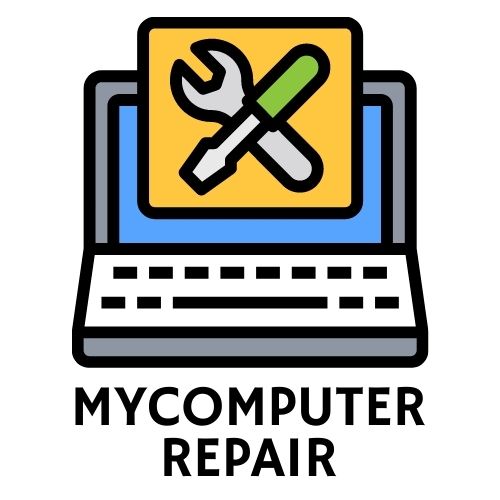Here are 6 great suggestions to free up your MacBook’s SSD space when it is bloated with too much data. When your MacBook starts to perform slower than before, it indicates that your storage is close to being full. Due to high-quality videos, photos, and music; higher storage is also needed for these kinds of files. The secret to keeping your storage free from bloating is to do regular cleaning of your MacBook.
Before we go clean your storage, let us first determine how much memory is still available on your MacBook.
- Click the “Apple Menu”. It is located in the top-left corner of the menu bar.
- Choose “About this Mac”, then click “Storage”
From there, you will see a breakdown of all things that use up your storage. Next, click the “Manage” button. A Storage Management window will open. It will show you different recommendations on how to optimize your storage.
To optimize your storage, click the “Optimize” button. This will automatically delete movies and TV shows that you have watched. If you want to watch them again, click the “Download” icon. It is located next to the movie or TV Program that you want. Aside from deleting movies and TV Programs, Mac can also save up some storage space. It will save only the most recent email attachments. You can still access the email attachments by downloading and saving them manually to your Mac. For computer repair services in Malaysia, you can contact MyComputer Repair to get your desktop computers, laptops and devices repaired satisfactorily and efficiently.
Now that we know how to assess and optimize our computer’s storage, let’s now proceed to the six great suggestions to free up your MacBook’s SSD space.
Store Data in iCloud
iCloud is a new feature that allows data storage without taking up space on your computer. It is a storage plan that you can buy from Apple. Once your storage space exceeds its limit, you can buy more iCloud storage. iCloud is only accessible with an internet connection. There are storage options in iCloud, and here are they:
Desktop and Documents
iCloud Drive is where you can store files and documents. When you do not have enough space, Mac only stores the files that you opened recently. This feature in Mac will let you access files even when you are offline. While with iCloud, you can access the files if you download them first.
Photos and Videos
You can store high-quality photos and videos on iCloud Photos. If you want to access your photos and videos, you have to download them from iCloud Photos. When there is not enough memory space in your Mac, it will save space-saving versions of the photos and videos.
Messages
iCloud can also store your messages and attachments. Your Mac computer can only store messages and attachments that you recently opened. This happens when your computer storage is close to being full.
Search and Remove Duplicate Files
Another way to free your storage space is to remove duplicate files from your Mac. If you have been using your computer for a long time, there are times when you accidentally store similar files in your drive. This is true when you unintentionally download files twice. Or when you copy music to iTunes Media Folder and still keep the original copy from its previous location. You can detect and delete duplicate files by using a third-party application. Make sure that you remove files one by one to prevent deleting important files.
Get Rid of Caches and Temporary Files
Your Mac computer stores unnecessary or temporary files such as caches. This can pile up and use a large space in your storage. You can detect caches and unnecessary files with a third-party application. You can also use this application to delete cache files from your Mac computer.
Empty Trash Automatically
The best way to free up your MacBook’s SSD space is to delete trash permanently. Deleting trash on a regular basis is a big help to keep your Mac’s storage healthy. To keep up with the routine of emptying your trash, you can set cleaning on an automatic status. This feature will delete files in the trash after thirty (30) days.
Here’s how to empty trash on your MacBook:
- Right-click on the Trash Bin icon, then select “Empty Trash/Empty Bin”
Here’s how to automatically empty trash on your MacBook:
- Click “About my Mac”, then select “Storage”, then “Manage”
- Among the options, select “Empty Trash Automatically”
- Click “Turn On”
Reduce Clutter
Mac’s reduce clutter feature is used to find large files and documents that you may no longer need. This also allows you to delete files that aren’t important. When you open the reduce clutter option, you will see files in categories. The categories show how much storage space is used up by applications.
Here’s how to use reduce clutter:
- Click “About my Mac”, then “Storage”.
- Choose “Manage”
- Lastly, click “Review Files”
Upon clicking “Review Files”, you will see tab categories. These categories include Large Files, Downloads, Unsupported Apps, Containers, and File Browser.
Get Rid of Unwanted Applications
With Mac, there is an option where you can remove unsupported applications. You can delete incompatible applications by clicking on the Storage, then Manage. But if you want to delete applications that you no longer use, you uninstall them manually.
Here the two ways to get rid of unwanted applications:
- First Option: You can delete the application from its Application folder. First, search for the “Finder” window. Then right-click on the App that you want to delete. Lastly, choose “Move to Trash/Bin”
- Second Option: Press F4 to launch a launchpad. From the launchpad, search the application that you want to erase. Next, press “Alt/Option”. Then, move your mouse to the app. Lastly, click “X” to delete the application.
Note: In some cases, Mac won’t be able to eliminate related files from the app. But if you want to remove the app and all its data, you can install a third-party app, such as uninstallers.
Conclusion
The best way to take care of your MacBook is by keeping its SSD space free from bloating. You will achieve healthy storage for your MacBook if you follow the six great suggestions above. But if you need professional help for your MacBooks or Mac computer, consult with us! Experts from Computer Repair Malaysia are more than willing to help you with your computer needs. We repair faulty computers, Mac, phones, and iPads. Visit our website at https://www.mycomputerrepair.com.my.


Recent Comments